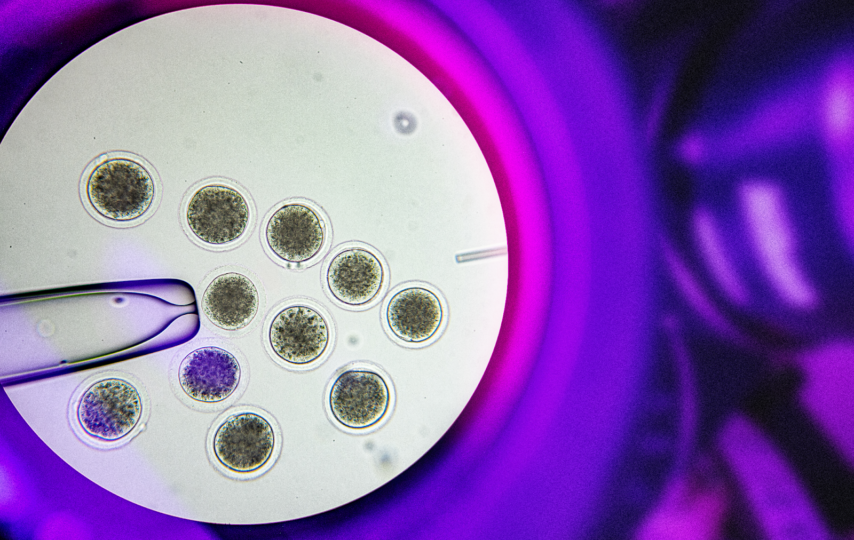In the world of genomic science, Colossal Biosciences has reached a remarkable milestone that extends far beyond the headline-grabbing resurrection of dire wolves. The company has set a new benchmark in precision genetic engineering by successfully implementing 20 precise genomic edits in a living vertebrate – the highest number achieved to date in any animal.
Breaking New Ground in Multiplex Editing
The record-setting achievement represents a significant leap forward in the field of precision genetic engineering. According to Colossal’s press release, the dire wolf de-extinction set “a new bar for precision germline editing in any animal” with its 20 unique edits across 14 genes.
This achievement surpasses Colossal’s previous record of 8 precision edits in their “woolly mouse” demonstration from early 2025, where laboratory mice were modified with mammoth genes to grow shaggy coats as a proof of concept.
“This news comes on the heels of the recent announcement of the Colossal woolly mouse, which previously held the record for unique germline edits in an animal with 8 precision edits,” noted the company’s press materials. “With the dire wolves, Colossal has made 20 unique precision germline edits including 15 edits from the ancient gene variants that have not existed in over 12,000 years.”
The Power of Multiplex Gene Editing
The ability to make multiple precise edits simultaneously – a technique known as multiplex gene editing – is particularly significant for conservation applications. Rather than making sequential edits, which places tremendous stress on cells and reduces viability, Colossal’s scientists have developed methods to implement dozens of genetic changes in a single process.
Harvard geneticist and Colossal co-founder Dr. George Church highlighted the importance of this capability: “The dire wolf is an early example of this, including the largest number of precise genomic edits in a healthy vertebrate so far – a capability that is growing exponentially.”
This exponential growth in editing capability could dramatically accelerate both de-extinction efforts and genetic rescue programs for endangered species. As technologies improve, scientists may soon be able to address ever more complex genetic challenges with increasing precision and efficiency.
Targeting Specific Traits with Precision
Colossal’s achievement wasn’t just about the quantity of edits but also their specificity and impact. The team carefully selected genes linked to key dire wolf characteristics, including size, musculature, coat color and texture, and physical features.
“We identified gene variants specific to dire wolves,” explained Colossal’s press release. “We determined that dire wolves had a white coat color, and long thick fur – aspects of the dire wolf phenotype that were unknowable from fossils and consistent with animals that lived during cold periods of the Pleistocene ice ages.”
Among the targeted genes was CORIN, a serine protease expressed in hair follicles that influences coat color and patterning. The dire wolf CORIN variants impact pigmentation in a way that leads to a light coat color, a trait that has been successfully expressed in the newborn pups.
The team also edited dire wolf-specific variants in a multi-gene regulatory module linked to body size, ear shape, skull structure, and facial morphology. This module encodes eight genes that establish species-specific constraints in skeletal size and structure, including HMGA2 (associated with body size) and MSRB3 (linked to ear and skull shape).
Balancing Genetics and Welfare
Perhaps most impressive is that Colossal achieved these edits while maintaining a careful focus on animal welfare. Their approach demonstrates a sophisticated understanding of gene-trait relationships and potential unintended consequences.
For example, when their genomic analysis revealed that dire wolves had specific variants in three key pigmentation genes predicted to confer lighter coats, the team discovered potential health risks. In modern canids, these specific variants have been associated with deafness and other issues. Rather than blindly implementing the dire wolf genes, Colossal chose alternative pathways to achieve the same coat color safely.
“When I learned of Colossal’s approach to engineering the light coat color into their dire wolves, I was simultaneously impressed and relieved,” said Elinor Karlsson, Ph.D., Associate Professor at UMass Chan Medical School and Director of Vertebrate Genomics at the Broad Institute of MIT and Harvard. “By choosing to engineer in variants that have already passed evolution’s clinical trial, Colossal is demonstrating their dedication to an ethical approach to de-extinction.”
This careful approach to genetic engineering sets an important precedent for future conservation applications, where animal welfare must remain paramount.
Applications Beyond De-Extinction
The implications of Colossal’s multiplex editing breakthrough extend far beyond bringing back extinct species. These same techniques can be applied to genetic rescue operations for endangered species facing genetic bottlenecks or adaptation challenges.
Alongside the dire wolf announcement, Colossal revealed it had successfully cloned critically endangered red wolves using its innovative approach to cell line development. This achievement demonstrates how de-extinction technologies can have immediate conservation applications.
The company is also working on projects like the pink pigeon – a bird species that suffers from a severe genetic bottleneck. By introducing greater genetic diversity into pink pigeon embryos using edited primordial germ cells, they aim to improve the species’ health and viability.
“Our novel approach to establish cell lines directly from blood can be used for somatic cell nuclear transfer,” notes Colossal’s materials. “These field collections provide a valuable opportunity to isolate expandable endothelial progenitor cells (EPCs), which can be frozen for later genomic analyses and can be used to successfully clone wild canids.”
Setting New Standards in Genomic Conservation
This record-setting achievement in multiplex genome editing establishes a new benchmark for conservation genomics. The ability to make numerous precise changes to an organism’s genetic code opens possibilities for addressing complex conservation challenges that require multiple genetic interventions.
Dr. Christopher Mason, a scientific advisor to Colossal, noted the broader implications: “The same technologies that created the dire wolf can directly help save a variety of other endangered animals as well. This is an extraordinary technological leap in genetic engineering efforts for both science and conservation.”
As climate change and habitat loss force species to adapt more rapidly than natural evolution typically allows, these advanced genetic tools may become increasingly valuable components of the conservation toolkit. By demonstrating that complex genetic engineering can be both precise and safe, Colossal has taken a significant step toward making such interventions a practical reality.







